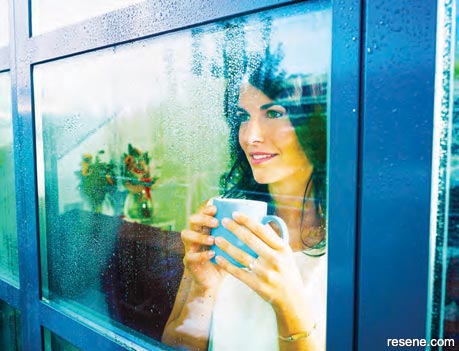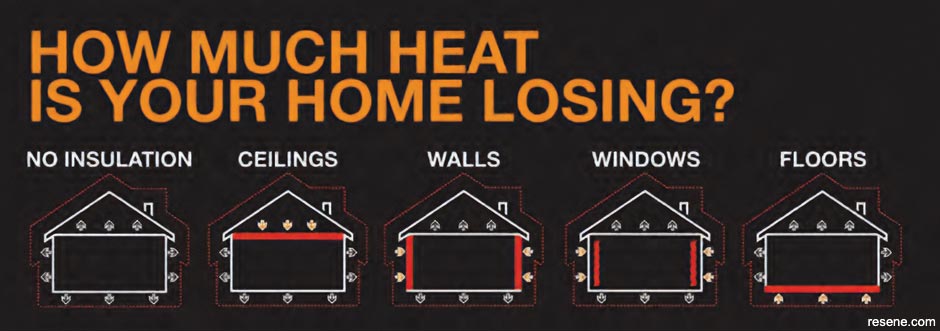From The Home Guide - your renovation and building resource
Did you know? Homes built before 1978 were not required by law to have insulation, and did you know that “it wasn’t until 1991 that it became mandatory to fully insulate new and renovated homes”.

Many people have insulation in their ceiling and think that is enough – but the reality is having Ceiling and Underfloor insulation will only increase the temperature of your home by less than 0.8 degrees.
Even if the ceiling has been insulated, the heat in the rising warm air will then try to escape via the nearest exit – through the walls. Most people assume that more heat goes out your windows than your walls. This is not true, as your average houses wall area is much greater that the window area, in our experience there is generally about 70% wall to 30% window, this is taking into account the total area around the outside of the house.
Generally there is also wall area above most windows, and in some cases, quite a lot. Heat always flows from hot to cold. If only the roof is insulated then warm air currents will travel along the ceiling, trying to find the next coldest place to escape. The first places the moving air current will come to are the walls if these areas are not insulated. The air will hit this cold un-insulated wall, thus cooling and becoming heavier causing it to sink down to the floor. This cooling of the air is accelerated when it comes in contact with windows, which will be as cold as the outside temperature. Its possible to put a curtain over a window, but its not really practical over a wall.

The flow on effect of this problem is that, as the cold air drops down the walls and windows, it picks up speed so, by the time it reaches the floor line, it moves into room in the direction of the heat source at about 2 metres per second, creating draughts.
The other inherent problem is that when warm air hits cold annulated walls you get condensation. When the wall lining holds moisture, mould and mildew become an issue. By insulating the cavity behind, it then allows the wall to warm up to temperatures approaching internal temperatures. Once the wall is warm the heat that you pay good money for will be retained for much longer, helping to warm the entire home and not just the ceiling or the street.
The Home Guide - your renovation and building resource
Helping you on your way to a successful and rewarding renovating experience - valuable information, tips, hints and useful checklists...
Order online now:
Testpots |
Paints |
Primers and Sealers |
Stains |
Clears |
Accessories
![]() Get inspired ! Subscribe
Get inspired ! Subscribe ![]() Get saving ! Apply for a DIY card
Get saving ! Apply for a DIY card
Can't find what you're looking for? Ask us!
Company profile | Terms | Privacy policy | Quality and environmental policy | Health and safety policy
Colours shown on this website are a representation only. Please refer to the actual paint or product sample. Resene colour charts, testpots and samples are available for ordering online. See measurements/conversions for more details on how electronic colour values are achieved.
What's new | Specifiers | Painters | DIYers | Artists | Kids | Sitemap | Home | TOP ⇧
